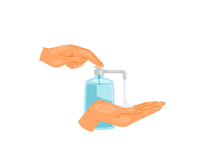Romiplostim
Uses of Romiplostim
- Chronic immune thrombocytopenia (ITP)
- Thrombocytopenia due to bone marrow disorders
- To reduce bleeding risk in patients with low platelet counts
How Romiplostim Works
Romiplostim mimics thrombopoietin, a natural protein that stimulates platelet production in the bone marrow, thereby increasing platelet levels in the blood.
Benefits of Romiplostim
- Effectively raises platelet counts
- Reduces bleeding episodes
- Improves quality of life for patients with ITP
- Can be used when other treatments fail
How to Take Romiplostim
Romiplostim is given as a subcutaneous injection under the skin, usually once a week. The dosage and schedule will be determined by your healthcare provider based on your platelet levels and response to treatment.
Type of Dosage Available
- Injectable solution (subcutaneous)
Side Effects of Romiplostim
- Headache
- Fatigue
- Nausea
- Joint or muscle pain
- Increased risk of blood clots
- Allergic reactions (rare)
Safety Advice
- Use only under medical supervision
- Monitor platelet levels regularly
- Report any unusual bleeding or bruising
- Avoid medications that can increase bleeding risk
- Inform your doctor if you have a history of blood clots
Frequently Asked Questions (FAQs)
Q: What is Romiplostim used for?
A: It is used to treat low platelet counts in patients with immune thrombocytopenia to reduce bleeding risk.
Q: How is Romiplostim administered?
A: It is given as a weekly subcutaneous injection under the skin.
Q: Can Romiplostim cause blood clots?
A: Yes, there is an increased risk of blood clots, so monitoring by your doctor is important.
Q: Is Romiplostim a cure for ITP?
A: It helps manage the condition by increasing platelet counts but does not cure it.
Q: Can I use Romiplostim at home?
A: Yes, after proper training, patients can administer it at home, but regular doctor visits are necessary.
Medicine Not Available for Romiplostim
Uses of Romiplostim
- Chronic immune thrombocytopenia (ITP)
- Thrombocytopenia due to bone marrow disorders
- To reduce bleeding risk in patients with low platelet counts
How Romiplostim Works
Romiplostim mimics thrombopoietin, a natural protein that stimulates platelet production in the bone marrow, thereby increasing platelet levels in the blood.
Benefits of Romiplostim
- Effectively raises platelet counts
- Reduces bleeding episodes
- Improves quality of life for patients with ITP
- Can be used when other treatments fail
How to Take Romiplostim
Romiplostim is given as a subcutaneous injection under the skin, usually once a week. The dosage and schedule will be determined by your healthcare provider based on your platelet levels and response to treatment.
Type of Dosage Available
- Injectable solution (subcutaneous)
Side Effects of Romiplostim
- Headache
- Fatigue
- Nausea
- Joint or muscle pain
- Increased risk of blood clots
- Allergic reactions (rare)
Safety Advice
- Use only under medical supervision
- Monitor platelet levels regularly
- Report any unusual bleeding or bruising
- Avoid medications that can increase bleeding risk
- Inform your doctor if you have a history of blood clots
Frequently Asked Questions (FAQs)
Q: What is Romiplostim used for?
A: It is used to treat low platelet counts in patients with immune thrombocytopenia to reduce bleeding risk.
Q: How is Romiplostim administered?
A: It is given as a weekly subcutaneous injection under the skin.
Q: Can Romiplostim cause blood clots?
A: Yes, there is an increased risk of blood clots, so monitoring by your doctor is important.
Q: Is Romiplostim a cure for ITP?
A: It helps manage the condition by increasing platelet counts but does not cure it.
Q: Can I use Romiplostim at home?
A: Yes, after proper training, patients can administer it at home, but regular doctor visits are necessary.
Download India's most affordable pharmacy app
- Compare with medicine prices
- Save upto 90% on your medicine bills

Temperature Controlled storage and delivery

Regular Sanitization

Disinfected Packaging









 Added!
Added!